Hey everybody, hope your week is off to a great start! Welcome to another rousing installment of Tutorial Tuesday. Each Tuesday on Linkarati we provide a detailed, step-by-step walkthrough of an important SEO tool, process, or technique.
For today’s tutorial, I’m going to take a look at a process which involves one of the premier tools in the SEO industry – Majestic.
Hey everybody, hope your week is off to a great start! Welcome to another rousing installment of Tutorial Tuesday. Each Tuesday on Linkarati we provide a detailed, step-by-step walkthrough of an important SEO tool, process, or technique.

For today’s tutorial, I’m going to take a look at a process which involves one of the premier tools in the SEO industry – Majestic. Specifically, I’ll teach you how to use Majestic to quickly evaluate a domain for the purpose of link acquisition.
While a full site audit requires much more, it’s possible to get a quick overview from Majestic.
Let’s get started!
Step One: Input Desired Domain into Majestic
Of course to start this process we must navigate to Majestic’s home page, which looks like this:
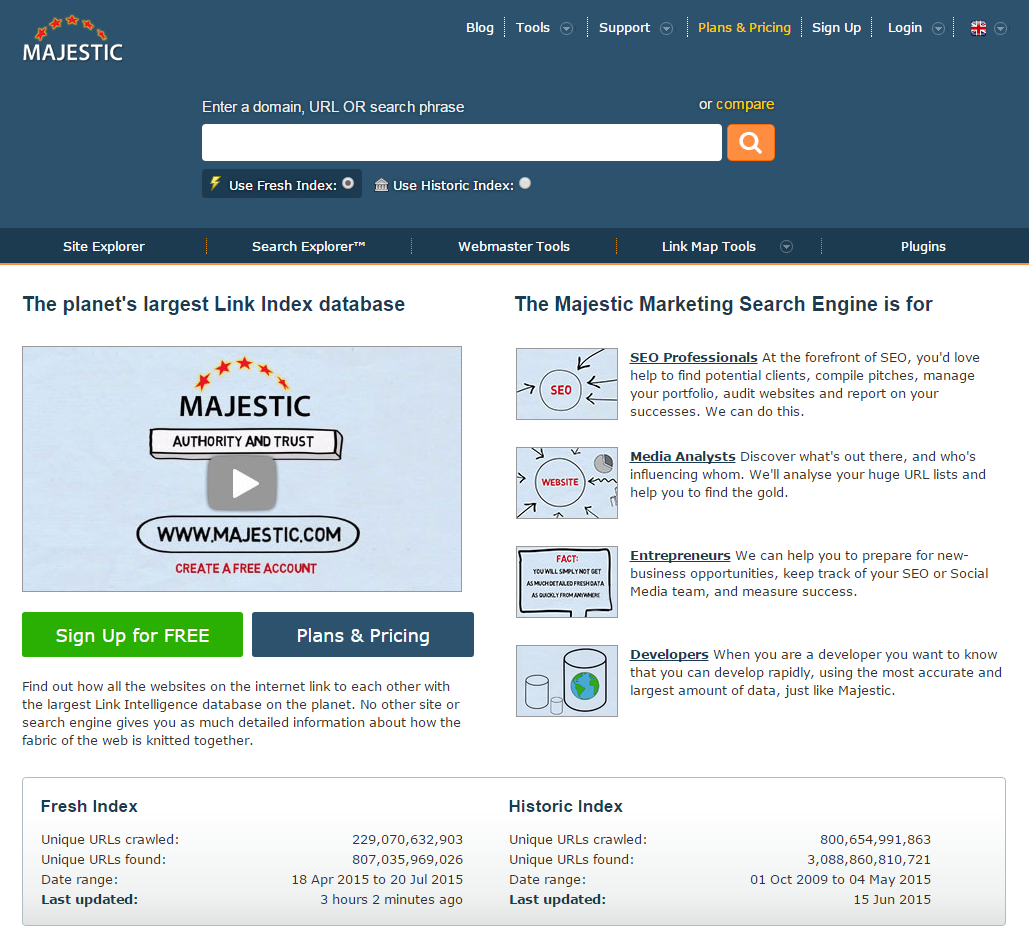
It’s possible to use a free version of Majestic, but the information is very limited compared to a paid subscription. However, Majestic will provide full access at the free level for your own site, if you can verify site ownership.
For this tutorial I will be using a paid account so I can demonstrate all the features Majestic brings to the table. So to log into my Majestic account I simply click the “Login” link in the upper-right corner and enter my credentials.
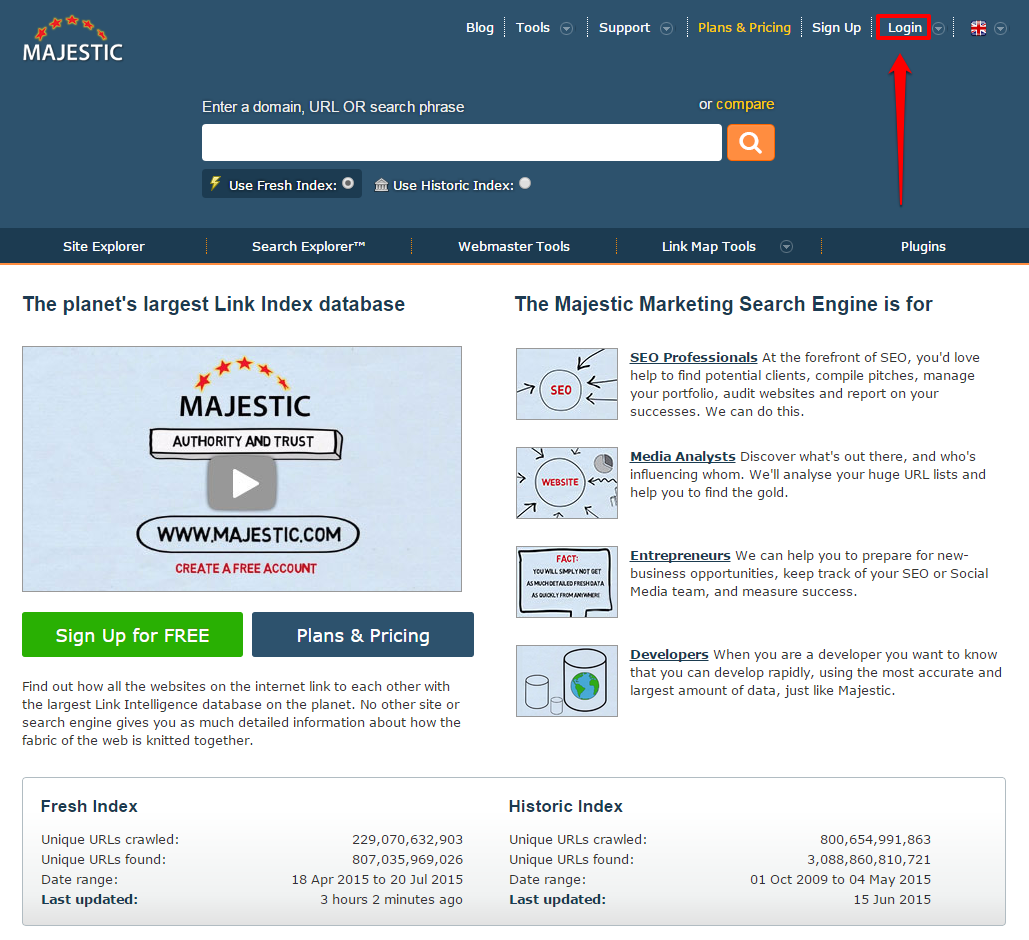
Once logged in, I simply enter the URL of the specific domain I want to analyze into the Majestic search box:
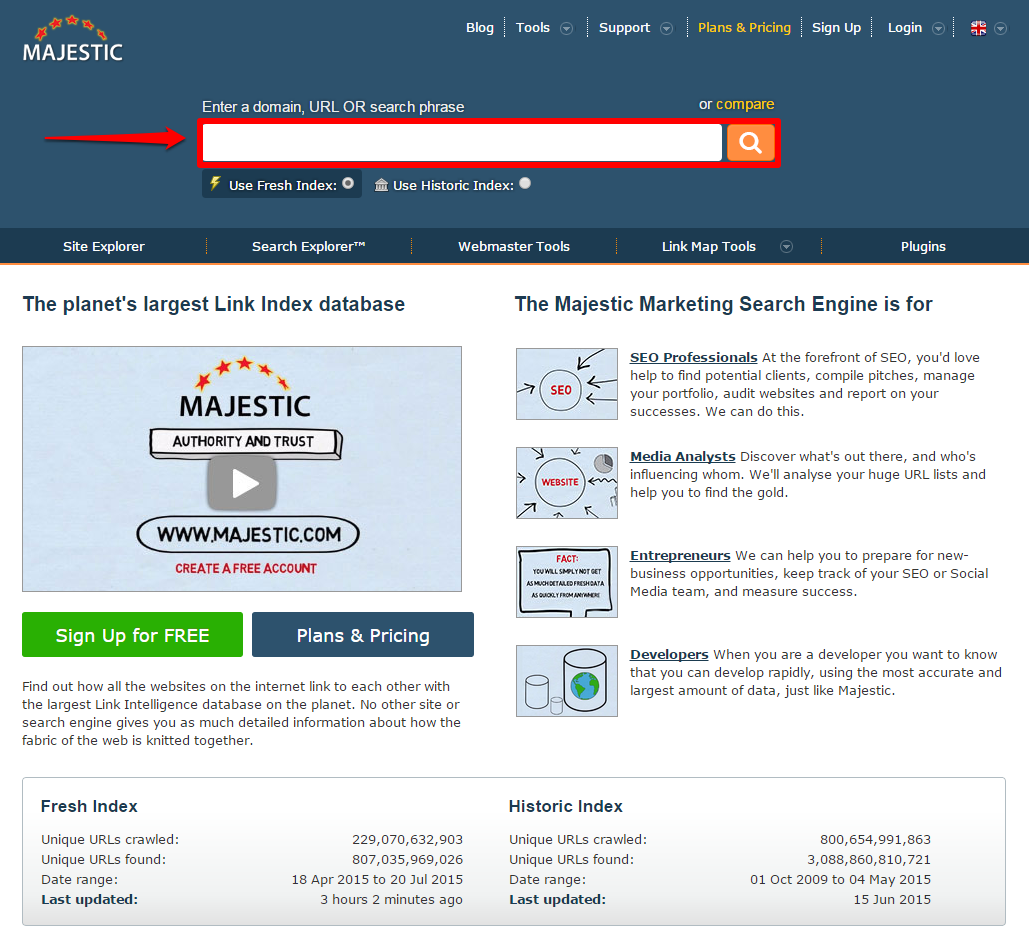
In honor of the fact that I recently brought home an adorable new puppy (you’re my boy Zeke!), I’ll be using petsmart.com as a running example throughout this guide.
Once I enter petsmart.com into the search box and hit enter, the fun begins!
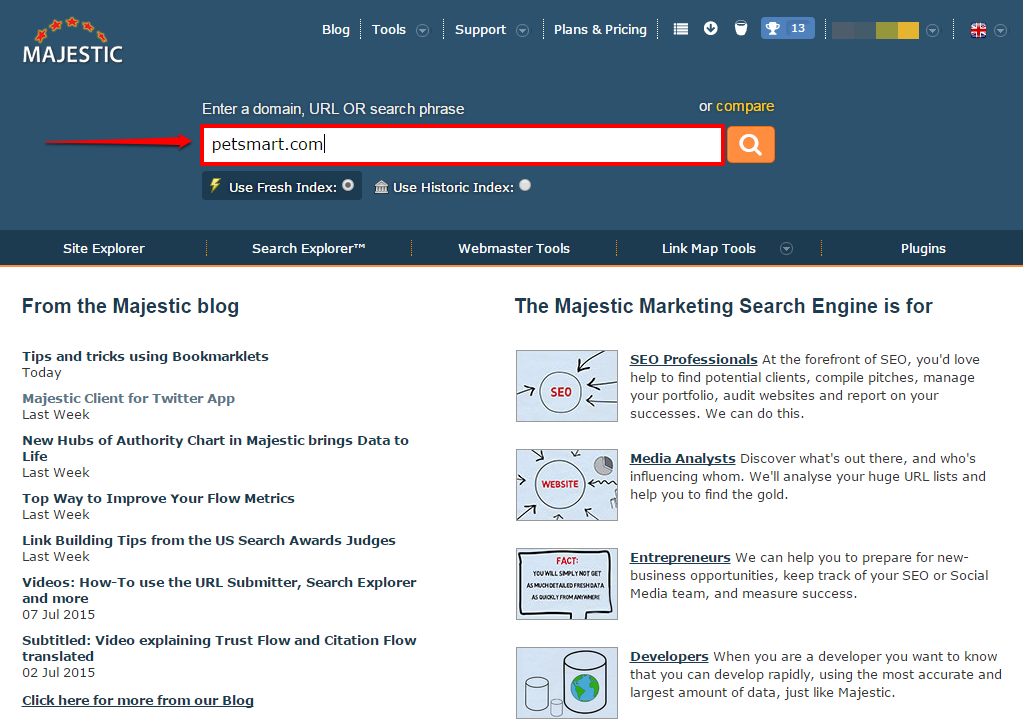
Step Two: Examine High-Level Metrics
Once I submit PetSmart’s URL into Majestic, I’m taken to this page:
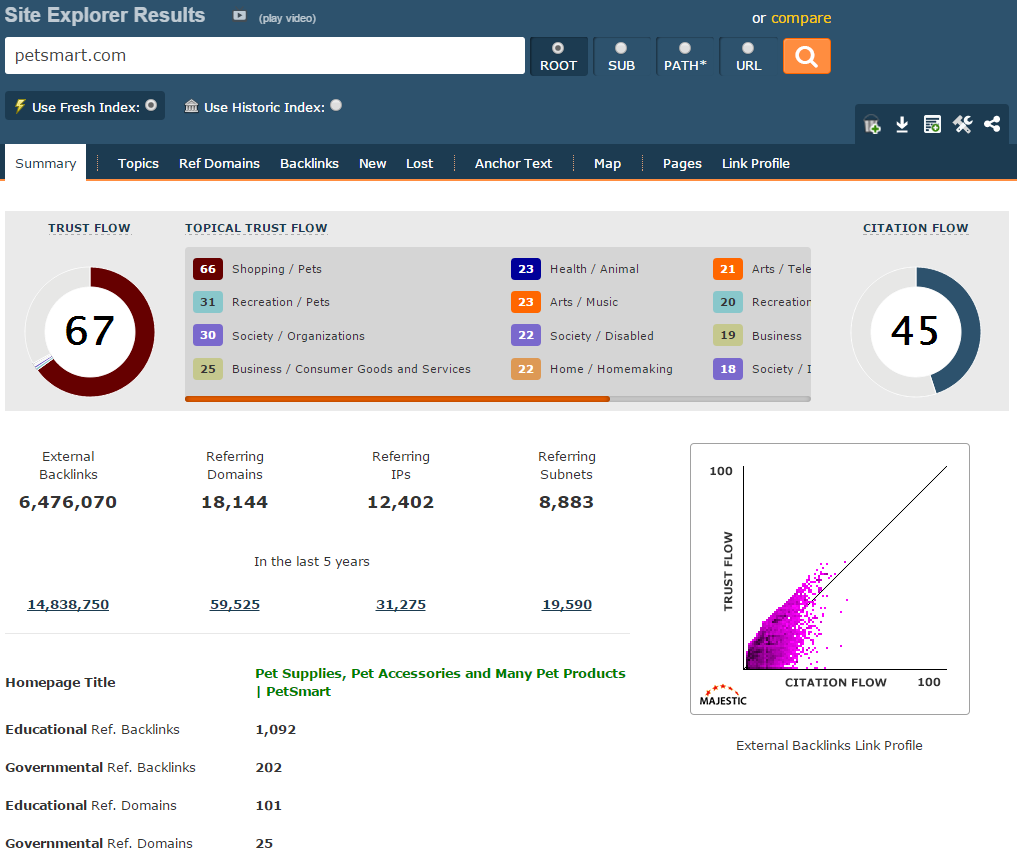
Because I’m using Majestic to do a quick site analysis (and not a full-blown audit), I’ll take a high-level view when examining metrics.
The best place to start in Majestic is with “Trust Flow” and “Citation Flow”.
Trust Flow (TF), as defined by Majestic, is:
“Trust Flow is one of the Majestic Flow Metrics, which is weighted by the number of clicks from a seed set of trusted sites to a given URL, or Domain.”
Basically, Trust Flow generally signifies how many people arrive at a site through Majestic’s trusted sources. Trust Flow is a decent representation how trustworthy a search engine might view a site, so the higher the TF the better. TF is based on a scale of 0-100.
Looking at PetSmart’s TF it’s clear it is a highly trusted site:
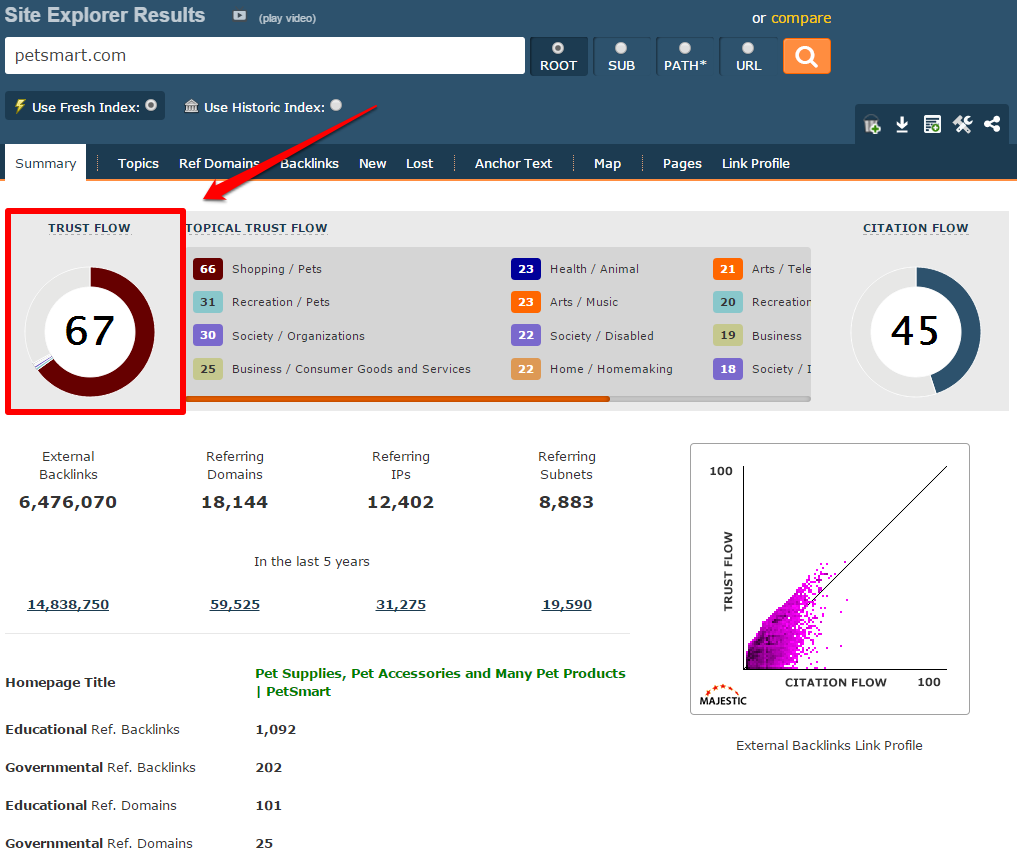
Next I’ll check out Majestic’s other primary metric – Citation Flow (CF).
Majestic describes Citation Flow as such:
“Citation Flow is one of the Majestic Flow Metrics, which is weighted by the number citations to a given URL, or Domain.”
Essentially, CF simply takes into account the total number of links pointing to a site. Similar to TF, CF ranges from 0-100.
Looking at PetSmart, they have a decent CF as well:
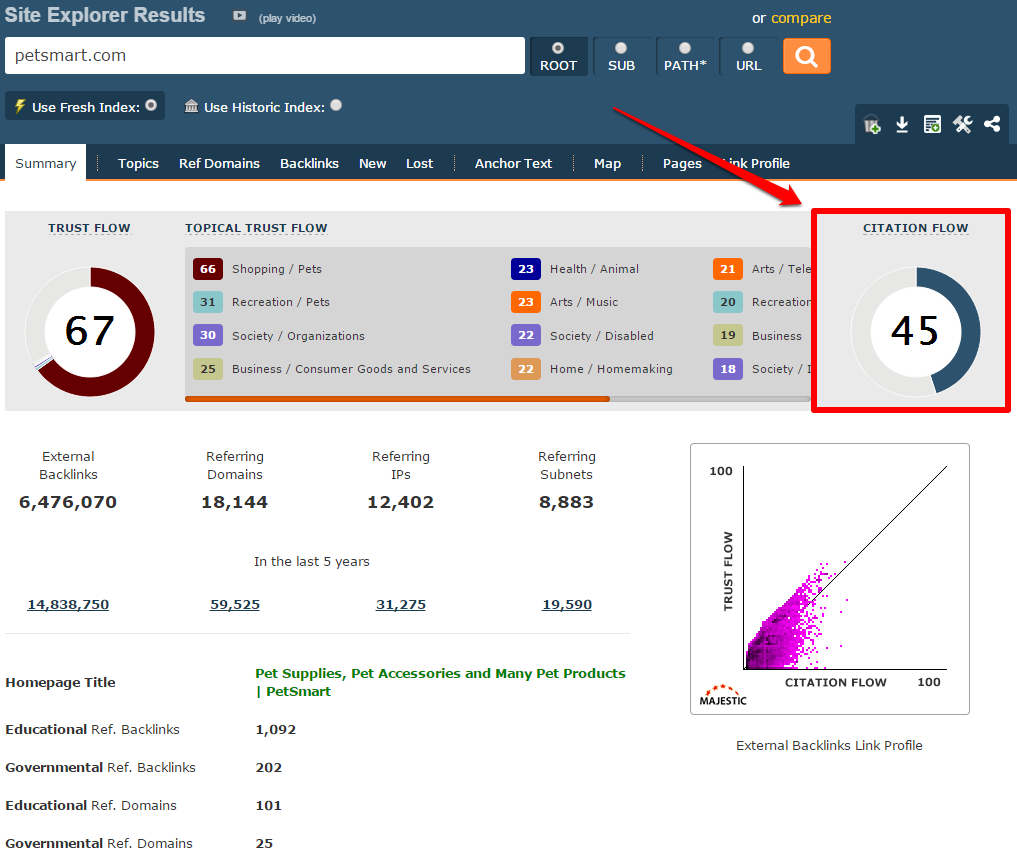
Trust Flow and Citation Flow will give a quick overview of whether or not Majestic views the site as trustworthy and authoritative.
Keep in mind that the minimum threshold of TF and CF will vary by niche and based upon your own site. But as you analyze more and more websites you’ll learn what to look for. To begin with, I’d recommend manually reviewing any site where the TF and CF seem low.
Another section worth checking out in Majestic is “Topical Trust Flow”. Majestic explains Topical Trust Flow (TTF) as:
“A score between 0-100 showing the Trust Flow within each topic. Topic scores are independent of each other.”
Topical Trust Flow assigns a score (0-100) for a range of topics/categories. The higher the site’s score, the more trusted they are within that category. Topical Trust Flow can be used to further evaluate relevance, because a quality link prospect will have a high TTF within their specific niche.
For example, PetSmart has high TTF ratings in relevant pet-related categories:
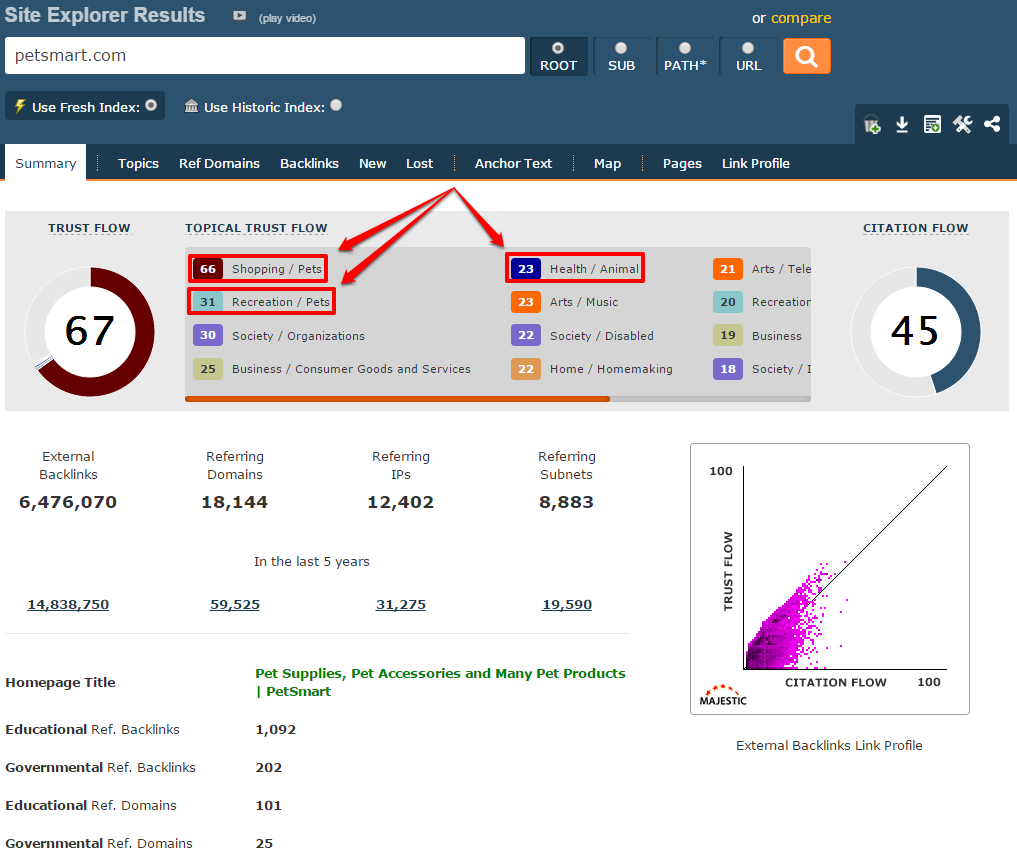
Looking at these various surface-level metrics demonstrates that PetSmart.com would be a great link target for a site within the pet products industry. (Note: PetSmart is a large, established brand, so these stats are inflated because it’s one of the biggest sites in the pet product space.)
However, I’m not done yet. It’s important to take a few moments to ensure there aren’t any red flags hidden in PetSmart’s backlinks.
Step Three: Check for Potential Red Flags
After checking the high-level metrics, it’s time to dig a bit deeper to make sure there isn’t anything suspicious within their link profile.
A good place to start is with the Topical Trust Flow section again. As mentioned before, PetSmart had high ratings in categories that made sense like “Shopping/Pets” and “Recreation/Pets”. However, if we had found that their highest rated topics were “Adult Entertainment” or “Online Gambling”, this would be very suspicious.
Next I can scroll down to the two graphs labeled “Backlink Breakdown” and “Anchor Text”:
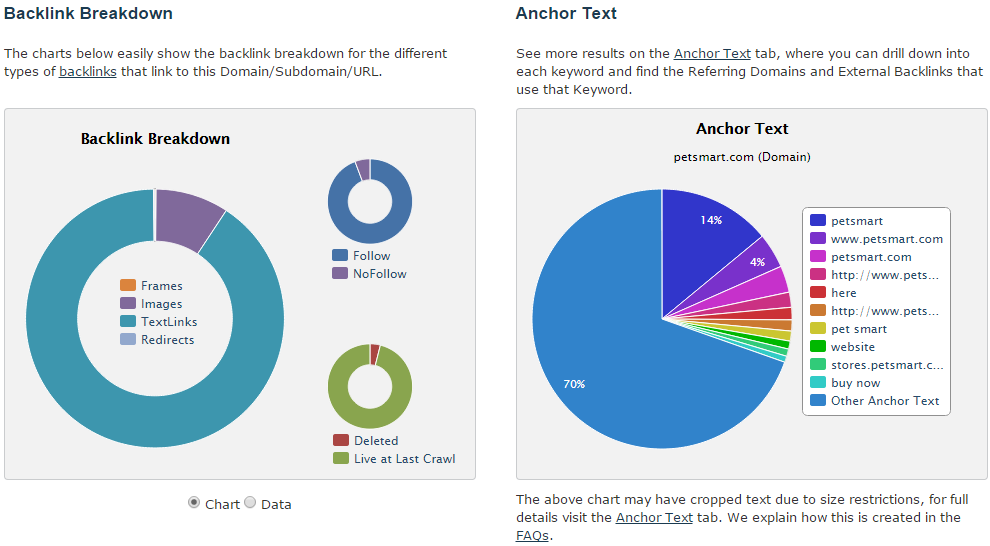
Here I’m looking for anything that seems unnatural or out of the ordinary. For example, if PetSmart had mostly No-follow links, or all their links were images – that would be a bit peculiar and could signify manipulative practices.
However, I can see from the graphs that PetSmart has a fairly natural distribution of Follow vs. No-Follow and Text links vs. images links:
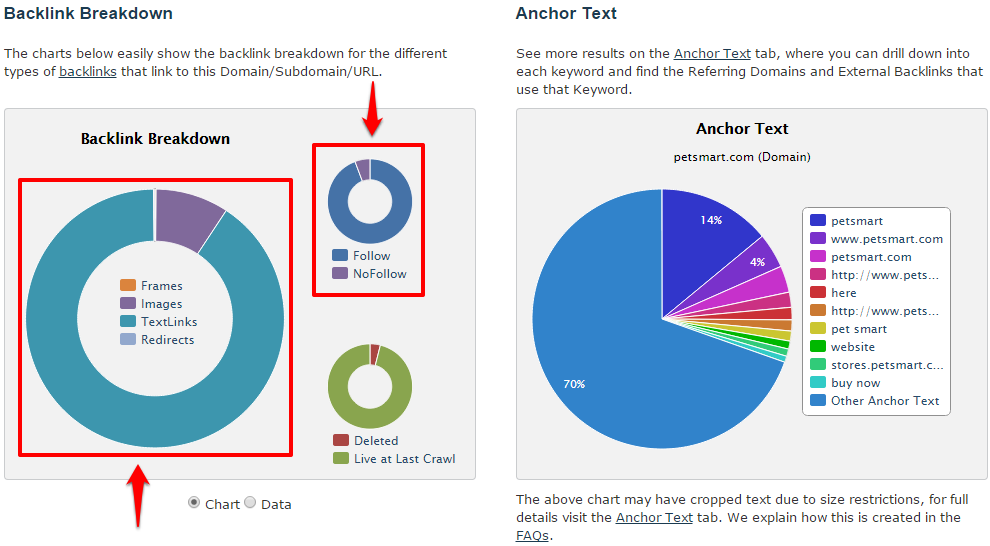
It’s also worth glancing at the Anchor Text distribution. Over-optimized and keyword rich anchor text will be a major red flag. For more information on anchor text distribution analysis, head over to Majestic’s blog and check out this post from Nicholas Chimonas.
PetSmart has a nice mix of anchor text, with the majority of anchors being branded (70%), which is very natural.
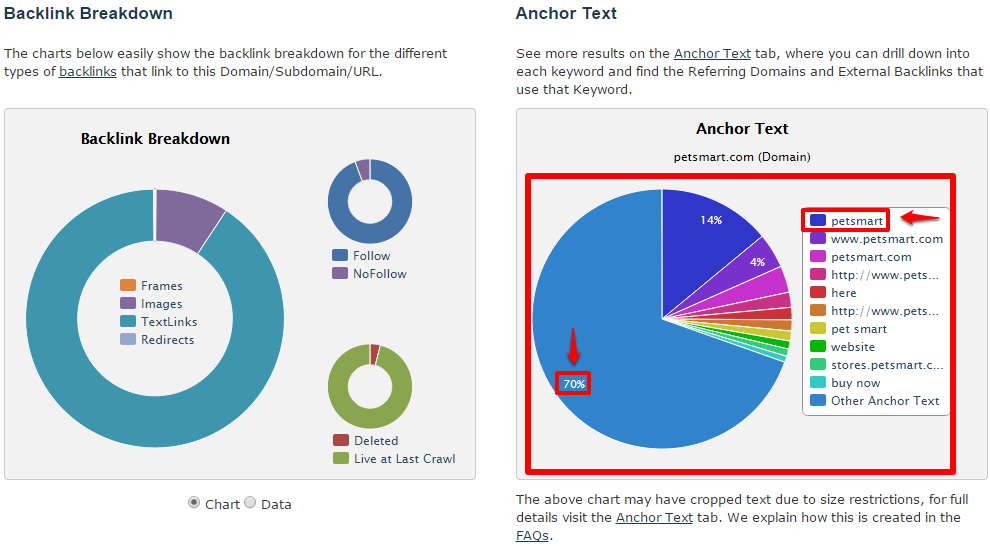
Barring any irregularities in the site’s backlink profile, you should now have a viable link prospect on your hands.
Recap
Majestic can be used to quickly and easily analyze a potential link prospect. Merely follow these simple steps:
- Input desired domain into Majestic - using a paid account offers more details
- Examine high-level metrics – specifically, Trust Flow, Citation Flow, and Topical Trust Flow
- Check for potential red flags – Check relevance of Topical Trust Flow, diversity of link types (text, image, etc.), Follow vs. No-Follow, and anchor text distribution
Majestic is a wonderful tool and this tutorial only scratches the surface of what it can do.
Again, before beginning the link building process you will need to do much more beyond what is covered in this tutorial. But if you’re looking for quick site analysis, this process can be effective.

